Seizure First Aid – What You Need To Know
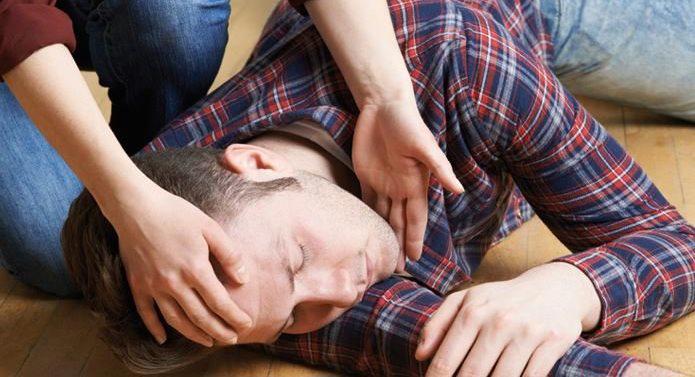
March has been labelled Epilepsy Awareness Month thanks to Epilepsy Australia’s initiative to reduce stigma and discrimination of epilepsy around the nation. According to Epilepsy Action Australia approximately 3% – 3.5% of Australians will experience epilepsy throughout their lives which means a minimum of 723,900 Australians are directly affected by the condition.
However, it’s important to know that not all seizures are epilepsy-related and can be caused by a number of factors. Seizures can be nerve-wracking for anyone to witness so it’s critical that all Aussies know how to provide seizure First Aid when the health event occurs. What not to do is just as crucial as what you should do, for your own safety and the safety of the casualty.
What Is Epilepsy?
Epilepsy is a brain disorder which causes two types of seizures: convulsive and non-convulsive. For a person to be diagnosed with epilepsy they will have experienced a number of seizures.
Up to 10% of the Australian population is at risk of suffering a seizure throughout their life, but just 3 – 4% will be diagnosed with epilepsy.
Epilepsy isn’t always a permanent disorder but people who are diagnosed with the condition do need to remain diligent in monitoring its impact.

What Causes Seizures?
Seizures are not exclusively caused by epilepsy. Non-epileptic seizures can be caused by diabetes, blocked blood vessels, high fever, head trauma, stroke and many other health conditions.

Types Of Seizures
There are many different types of seizures which are caused by different reasons. The most common seizures include:
Tonic-Clonic Seizure
Tonic-Clonic seizures were previously labelled grand mal seizures. They generally last between one to three minutes. If a tonic-clonic seizure lasts more than five minutes or a number of seizures occur consecutively the seizure is classed as a health emergency and you must call an ambulance immediately.
Throughout a tonic-clonic seizure the body will collapse and stiffen (tonic stage). Air will then gush past the vocal chords and cause a moan or whimper. The person may bite their tongue or cheek, so if you see blood discharging from the mouth do not be alarmed. The person’s limbs will then start to jerk in powerful motions (clonic stage). The person may drool, display a blue or red complexion, or lose control of their bladder and/or bowel.
When the person begins to regain consciousness they may be confused, lethargic, agitated or low in mood. Often people will have a headache and want to have a nap post seizure which is fine for them to do.
Signs and Symptoms of a Tonic-Clonic Seizure
- Sudden cry or moan
- Body collapsing
- Body stiffening and lying rigid for a few seconds
- Abrupt jerking of limbs
- Pale complexion and blue lips
- Saliva dribbling from the mouth
- Biting the tongue or cheek, resulting in blood in the saliva
- Lost control of bladder and/or bowel
- Unexplainably tired, confused or agitated afterwards
Management of A Tonic-Clonic Seizure
Throughout the seizure:
- Do NOT try to restrain the individual
- Do NOT put anything in the persons mouth
- Do NOT move the person unless they are in danger
- Do protect the casualty from suffering any injuries
- Do position something soft underneath the persons head
- Do record the length of the seizure
After the seizure:
- Follow DRSABCD
- As soon as the jerking finishes, place the person into the recovery position to keep the airway clear
- If the person has an object or food in their mouth or has vomited, place the person into the recovery position immediately to clear airways
- Manage any injuries caused by the seizure
- Do NOT interrupt the person if they fall asleep, continue to monitor their condition, check breathing and response
Call triple zero (000) if:
- The seizure lasts for more than a five minute period
- Another seizure takes place soon after
- The person suffers an injury from the seizure
- The person has diabetes or is pregnant
Febrile Convulsions
Febrile convulsions in infants and children are often due to fever, infection or epilepsy. The onset of convulsions in infants and young children can be caused by a sudden increase in temperature. Febrile convulsions generally do not exceed five minutes.
Note: it is rare for high temperatures to cause convulsions in adults but it can happen
Signs and Symptoms of Febrile Convulsions
- Fever
- Muscle stiffening
- Twitching or jerking of face and/or limbs
- Eyes rolling upward
- Blue face and lips
- Unconsciousness
Management of Febrile Convulsions
Throughout the convulsion:
- Position the child on their side
- Do NOT restrain the child
After the convulsion:
- Follow DRSABCD
- Seek medical assistance
Note: do NOT bathe or cool the child with a sponge bath, DO remove excess or restrictive clothing to cool their fever down.
Seizures can be very confronting for anyone to witness. With up to 10% of Australians at risk of suffering from a seizure, it’s essential that all Australians are informed on how to provide seizure First Aid. By being educated and prepared with seizure First Aid you can dramatically reduce anxiety in a stressful situation and ensure the person receives the best possible care.
Remember, having a seizure does not mean that someone is epileptic but it’s important to seek medical advice afterwards to ensure there are no wider health issues.
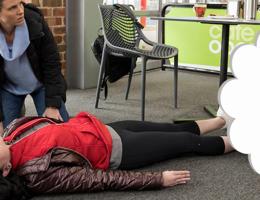
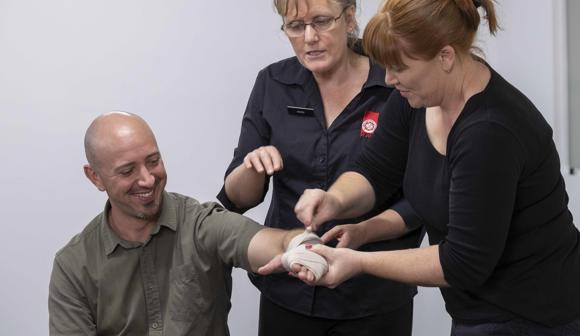
HLTAID011 PROVIDE FIRST AID
This course teaches the skills and knowledge required to recognise and respond to life-threatening emergencies and provide a first aid response to a casualty in a range of situations.
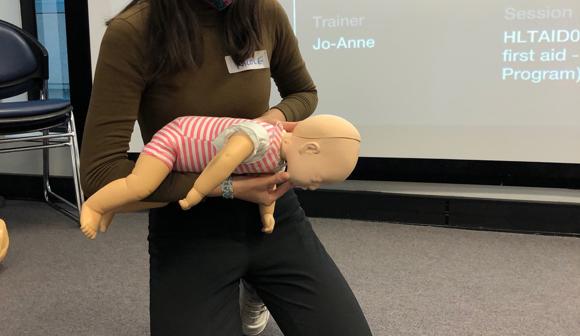
CARING FOR BABIES AND KIDS
4 Hour Face-to-Face
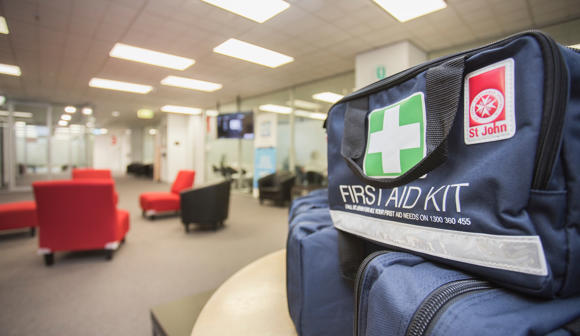
How to choose the right First Aid Kit for you
First aid kits can be a little daunting if you’re unfamiliar with what’s available. Will it have the right equipment, or enough of the right contents for me?
Read this article to find out how to pick a first aid kit based on your needs.
